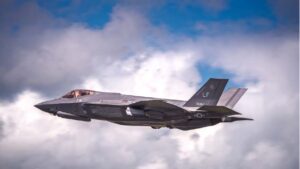A recent security breach at RAF Brize Norton by activists from Palestine Action has prompted renewed discussion about national security and the allocation of public funds.
The event has highlighted the importance of the police, military, and intelligence services, which are heavily funded to protect the UK from a variety of domestic and international threats. It has also brought greater attention to the police budget UK and its role in supporting national safety.
Police Budget in the UK: Funding for Defence, Security, and National Protection
Public spending on policing in the UK reached over £27 billion in the 2023–24 fiscal year. That is the highest total in over a decade. This includes funding for England and Wales’s 43 territorial police forces, as well as national-level policing bodies and intelligence support.
The Ministry of Defence Police, tasked with guarding key defence infrastructure, was allocated just over £180 million in 2024–25. This force plays a critical role in protecting sensitive military facilities and equipment. However, critics argue that years of underfunding have left gaps in readiness and manpower.
The national security budget, which includes police, domestic intelligence, and defence policing, exceeded £47 billion in the last year. This amount is used to maintain public order, track terrorism threats, secure borders, and protect strategic national interests.
Defence Spending: Investment in Armed Forces and Capabilities
The United Kingdom spent approximately £54 billion on defence in 2023–24. This figure is set to rise to nearly £57 billion in 2024–25 and almost £60 billion in the following year. These increases are in line with the government’s plan to raise defence spending to 2.5 percent of GDP by 2027.
Spending is spread across several priorities. Around £15 billion is directed to military personnel costs, which include salaries, pensions, and welfare for the Army, Royal Navy, and Royal Air Force. Capital investment in equipment and modernisation projects receives close to £18 billion, while infrastructure upgrades account for another £12 billion.
The UK’s nuclear deterrent, based primarily at HMNB Clyde, remains a significant financial commitment. The replacement of the Trident system and related submarines requires ongoing investment, with annual costs of around £2.6 billion.
An additional £4 billion goes to arms-length defence bodies and civilian contractors, supporting logistics, training, and procurement. Funding also supports global operations, including the UK’s military presence in Eastern Europe, the Middle East, and training missions in Africa. Operations in support of Ukraine alone have received over £2 billion in direct aid and material.
Recent procurement announcements include further investments in future combat aircraft, drones, and battlefield communications. There are also commitments to cyber-defence, artificial intelligence development, and space-based surveillance.
Despite these increases, frontline readiness and housing conditions for service personnel still require improvement. Army troop numbers have also been steadily declining, from 82,000 regulars in 2010 to around 72,000 today.
RAF Brize Norton Breach: A National Security Wake-Up Call
On 20 June 2025, four activists from the group Palestine Action gained access to RAF Brize Norton. This is the UK’s largest airbase, home to its air-to-air refuelling fleet and key to military logistics. The protesters used electric scooters to approach the perimeter, cut through fencing, and vandalised two RAF Voyager aircraft using paint and crowbars.
Reports estimate that the damage could cost up to £1 million to repair. The breach raised major questions about how such a vital military site could be left so vulnerable. It also triggered a high-level review of physical security at military bases across the country.
The activists were arrested and charged with criminal damage and breaching national security restrictions. However, the incident highlighted a wider concern: if lightly equipped protesters can infiltrate a base so easily, what protection exists against more serious threats?
It also put a spotlight on the Ministry of Defence Police and the quality of physical infrastructure, such as outdated fences, broken CCTV systems, and minimal on-site response capacity. As a result, emergency funding has been requested to improve perimeter defences, increase personnel, and modernise surveillance.
Managing Public Order and Policing Protests
Since the onset of the Gaza conflict in late 2023, police resources have been extensively engaged in monitoring pro-Palestinian demonstrations. In London alone, the Metropolitan Police spent nearly £19 million policing these events in late 2023, with other forces across the UK contributing additional significant resources. Nationwide, other forces spent an additional £6.5 million during that period.
By early 2025, the cumulative cost of policing related protests had exceeded £53 million. Over 30,000 officer shifts were used, many pulled from neighbourhood crime units or other operations. This included more than 6,000 officers deployed through mutual aid schemes from forces outside London.
The Home Affairs Committee described this as the most sustained period of protest-related pressure on UK policing since the 2012 London Olympics. Police chiefs noted that such sustained activity requires careful planning and significant operational flexibility. Some have suggested that protest organisers might contribute to policing costs when events are prolonged or disruptive practice already in use for large-scale sporting events.
Domestic and International Policy Priorities
The UK’s domestic security focus is clear: protect citizens, uphold the rule of law, and maintain national resilience. This includes preparing for threats such as terrorism, cyber-attacks, espionage, and sabotage.
Internationally, the UK maintains strong NATO ties and contributes troops and intelligence support to global efforts. This includes deployments to Eastern Europe, military aid to Ukraine, and naval patrols in the Red Sea and Gulf regions.
The government’s goal of increasing defence spending to 2.5 percent of GDP by 2027 reflects a strategic ambition to enhance capabilities. However, ensuring that budget increases translate into practical improvements in readiness, infrastructure, and personnel support remains a central challenge.
The RAF Brize Norton incident serves as a reminder that even with substantial budgets, maintaining effective security requires continuous evaluation and adaptation to emerging risks.
